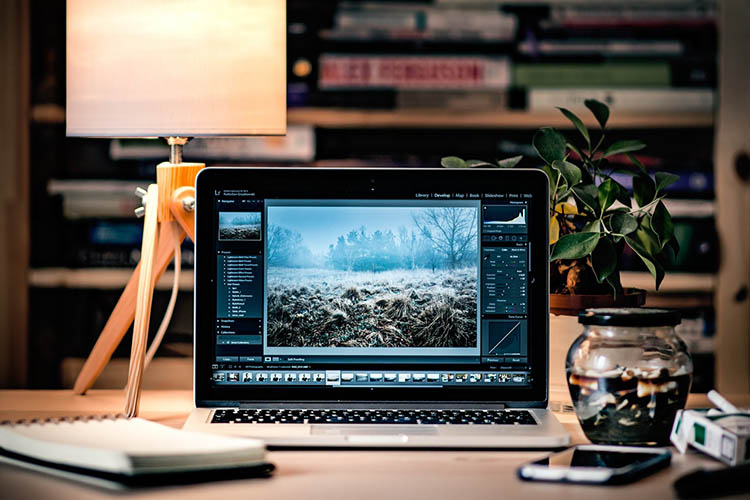A laptop, often called a notebook or “notebook computer”, is a small, portable personal computer with a “clamshell” form factor, an alphanumeric keyboard on the lower part of the “clamshell” and a thin LCD or LED computer screen on the upper portion, which is opened up to use the computer. Laptops are folded shut for transportation, and thus are suitable for mobile use. Although originally there was a distinction between laptops and notebooks, the former being bigger and heavier than the latter, as of 2014, there is often no longer any difference. Laptops are commonly used in a variety of settings, such as at work, in education, and for personal multimedia and home computer use.
A laptop combines the components, inputs, outputs, and capabilities of a desktop computer, including the display screen, small speakers, a keyboard, pointing devices (such as a touchpad or trackpad), a processor, and memory into a single unit. Most 2016-era laptops also have integrated webcams and built-in microphones. Some 2016-era laptops have touchscreens. Laptops can be powered either from an internal battery or by an external power supply from an AC adapter.
Hardware specifications, such as the processor speed and memory capacity, significantly vary between different types, makes, models and price points. Design elements, form factor, and construction can also vary significantly between models depending on intended use.
In terms of the technology I use the most, it’s probably a tie between my Blackberry and my MacBook Pro laptop. That’s how I communicate with the rest of the world and how I handle all the business I have to handle.
John Legend
Examples of specialized models of laptops include rugged notebooks for use in construction or military applications, as well as low production cost laptops such as those from the One Laptop per Child organization, which incorporate features like solar charging and semi-flexible components not found on most laptop computers.
Portable computers, which later developed into modern laptops, were originally considered to be a small niche market, mostly for specialized field applications, such as in the military, for accountants, or for traveling sales representatives. As portable computers evolved into the modern laptop, they became widely used for a variety of purposes.
The terms laptop and notebook are used interchangeably to describe a portable computer in English, although in some parts of the world one or the other may be preferred. There is some question as to the original etymology and specificity of either term—the term laptop appears to have been coined in the early 1980s to describe a mobile computer which could be used on one’s lap, and to distinguish these devices from earlier, much heavier, portable computers (often called “luggables”).
The term “notebook” appears to have gained currency somewhat later as manufacturers started producing even smaller portable devices, further reducing their weight and size and incorporating a display roughly the size of A4 paper; these were marketed as notebooks to distinguish them from bulkier laptops. Regardless of the etymology, by the late 1990s, the terms were interchangeable.
